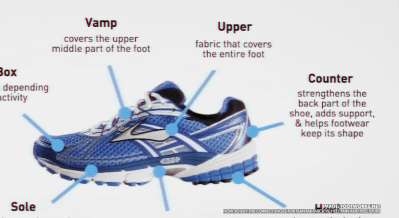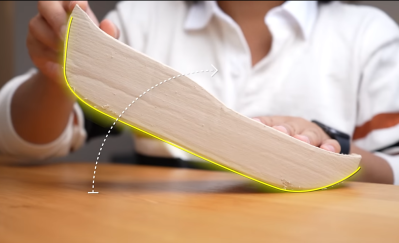
Unless you spend all your time lounging on the sofa, you probably own at least one pair of shoes. But have you ever thought to make your own to improve some aspect of your life? YouTube channel Answer in Progress set out to do precisely that, but it didn’t quite work out.
When you (well, other people) get into running, it’s tempting to believe a lot of the shoe company hype and just drop hundreds of dollars on the latest ‘super shoe’ and hope that will help you break your target time. But do you actually need to buy into all this, or can you make something yourself? The project aimed to get the 5k time down significantly, at any cost, but primarily by cheating with technology. The team set out to look at the design process, given that there is indeed a fair amount of science to shoe design. Firstly, after a quick run, the main issues with some existing shoes were identified, specifically that there are a lot of pain points; feet hurt from all the impacts, and knees take a real pounding, too. That meant they needed to increase the sole cushioning. They felt that too much energy was wasted with the shoes not promoting forward motion as much as possible; feet tended to bounce upwards so that a rocker sole shape would help. Finally, laces and other upper sole features cause distraction and some comfort issues, so those can be deleted.
process, given that there is indeed a fair amount of science to shoe design. Firstly, after a quick run, the main issues with some existing shoes were identified, specifically that there are a lot of pain points; feet hurt from all the impacts, and knees take a real pounding, too. That meant they needed to increase the sole cushioning. They felt that too much energy was wasted with the shoes not promoting forward motion as much as possible; feet tended to bounce upwards so that a rocker sole shape would help. Finally, laces and other upper sole features cause distraction and some comfort issues, so those can be deleted.

The plan was to make a ‘sock’ shoe style, with an upper in one piece and stretchy enough to slip on without laces. The process started by wrapping the foot in cling film and then a few layers of duct tape to fix the shape. This was split down the top to extract the foot, open out the pattern, and transfer it to some nylon fabric. The outer profile was transferred and cut out with simple hand tools in a fashion that would allow the shape to be reconstructed as it was glued to a sole. It sounds simple, but it’s pretty fiddly work.
The latest running shoes use specialised rubber materials for the midsole. The solid foam wedge between the outer rubber and the inner sole cushions the foot. Those materials are only a few per cent ‘better’ than much more accessible foams that can be 3D printed. After sculpting a sole shape by hand using Blender, a friend 3D printed it. After that, the upper part was glued and ready for a test run. Which didn’t last long. It turned out that the lack of a stable heel counter (the bit around the back) that helps lock the heel in place meant the foot was too loose in the shoe, causing potential issues such as an ankle roll. That would be not good. A follow-up session with a sports-focused chiropodist demonstrated that all this was rather pointless before the fundamental issues of strength and fitness were addressed. So, whilst it was fun to see an attempt to beat the big boys at their own game, it sure isn’t easy to pull it off, especially if you can’t get off the sofa.
The invention of flexible 3D printing filaments spurred the development of a wide range of 3D-printed footwear, like these low-poly beauties. While we’re 3D printing shoes, we also need some lace locks. Finally, with winter approaching for us Northerners, perhaps it’s time to run off a pair of 3D-printed strap-on cleats.
Thanks to [fluffy] for the tip!
No comments:
Post a Comment